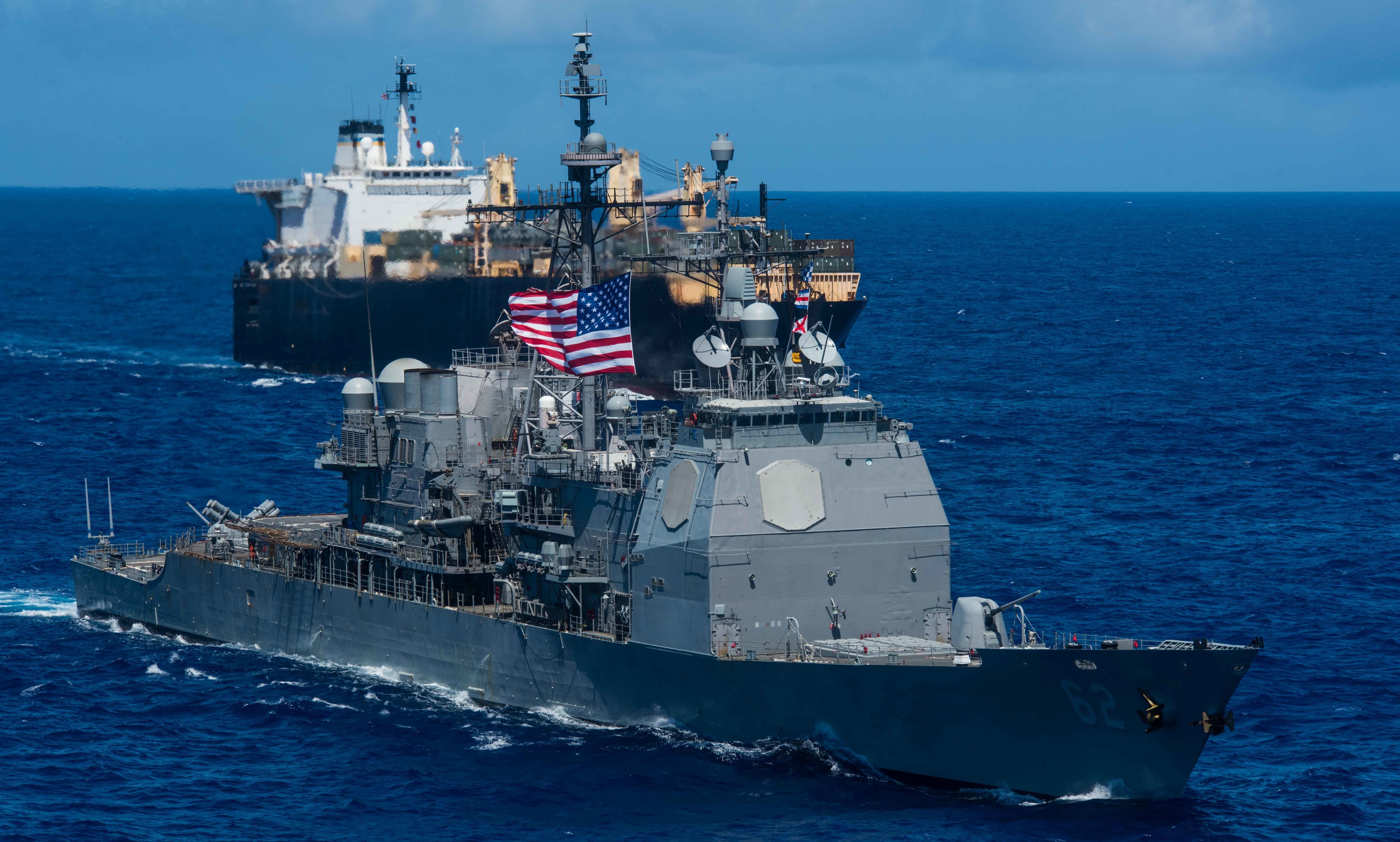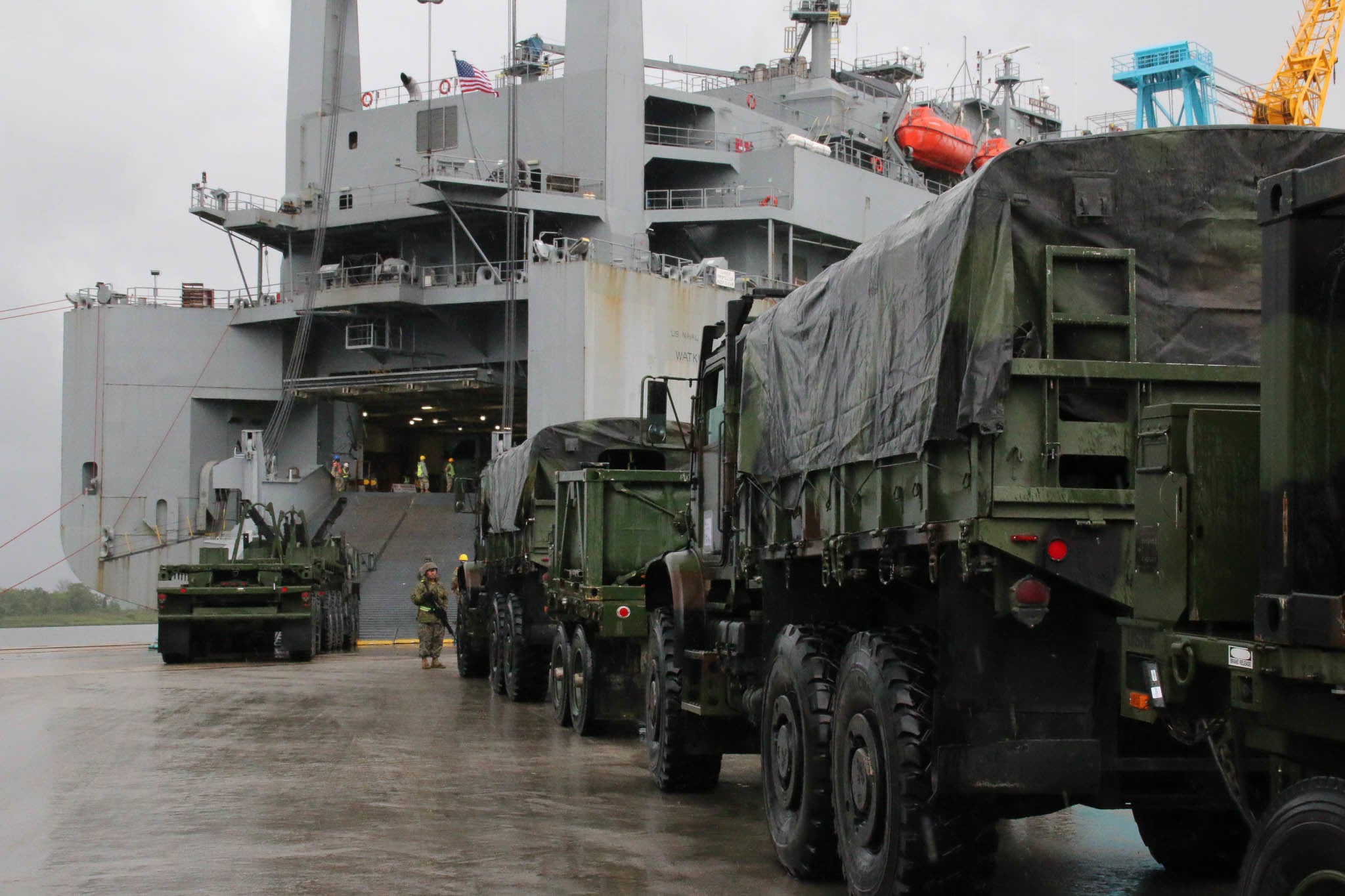WASHINGTON — The command in charge of U.S. military logistics worldwide on Tuesday triggered one the largest surges of its aging sealift ships in decades, a critical test of the country’s ability to move heavy equipment overseas in the event of a major conflict.
U.S. Transportation Command ordered a so-called turbo activation of 28 ships from a fleet of logistics ships spread across Military Sealift Command, the Department of Transportation and the Maritime Administration. The activation, the largest of its kind since Operation Iraqi Freedom, rapidly transitions ships from a semi-dormant, reduced operating status manned by a skeleton crew to a fully crewed ship ready to sail within five days.
In the event of a major conflict with China or Russia, the sealift fleet would need to carry up to 90 percent of U.S. Army and U.S. Marine Corps equipment to the fight — logistical activity that is key to the United States’ deterrence strategy. After all, Russia and China don’t have to fear the U.S. military if it can’t get to the fight.
RELATED

“These exercises typically involve only a few ships but this event targets 28 vessels for activation to provide a better assessment of the readiness of U.S. sealift forces than can be accomplished with fewer activations,” a TRANSCOM release said. “This scale will also stress the underlying support network involved in maintaining, manning and operating the nation’s ready sealift forces.”
TRANSCOM spokesman, Navy Capt. Kevin Stephens, said in an email that the exercise was the largest turbo activation of its kind on record, though there have been larger activations for real-world operations.
The sealift fleet is composed of 26 Military Sealift Command pre-positioning ships, 46 ships in the Ready Reserve Force and 15 command-owned roll-on/roll-off surge force ships.
The U.S. military has been increasingly vocal about its logistics shortfalls. Last year, the Army warned Congress in a memo that the country was facing a slow-rolling crisis and the prospect of a collapse in the nation’s sealift capacity.
In response to a committee inquiry, the Army in February sent a warning to the House Armed Services Committee in an information paper noting the nation’s surge sealift capacity — which would be responsible for transporting up to 90 percent of Army and Marine Corps equipment in the event of a major war — would fall below its requirement by 2024.
“Without proactive recapitalization of the Organic Surge Sealift Fleet, the Army will face unacceptable risk in force projection capability beginning in 2024,” the memo to the House Armed Services Committee read, adding that the advanced age of the fleet adds further risk to the equation.
“By 2034, 70% of the organic fleet will be over 60 years old — well past its economic useful life; further degrading the Army’s ability to deploy forces,” the document reads.
The large-scale activation of so much of the fleet will be a critical test of the nation’s aging capacity, said Jerry Hendrix, an analyst with the Telemus Group who has extensively studied the logistics issue.
“This is a real signal and it’s also a real test of the logistics force,” he said. “I’ll be interested to find out how they performed: what the material readiness of the fleet was, how good was their manning and whether we see any signs of problems with training.
“But the key here is to raise the profile of the idea that the Army doesn’t move without the logistics force.”
David B. Larter was the naval warfare reporter for Defense News.




